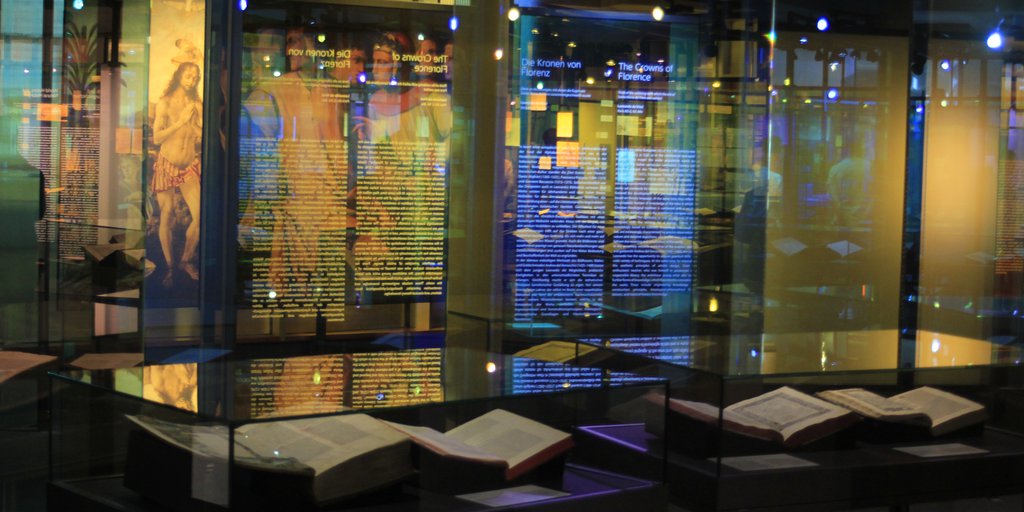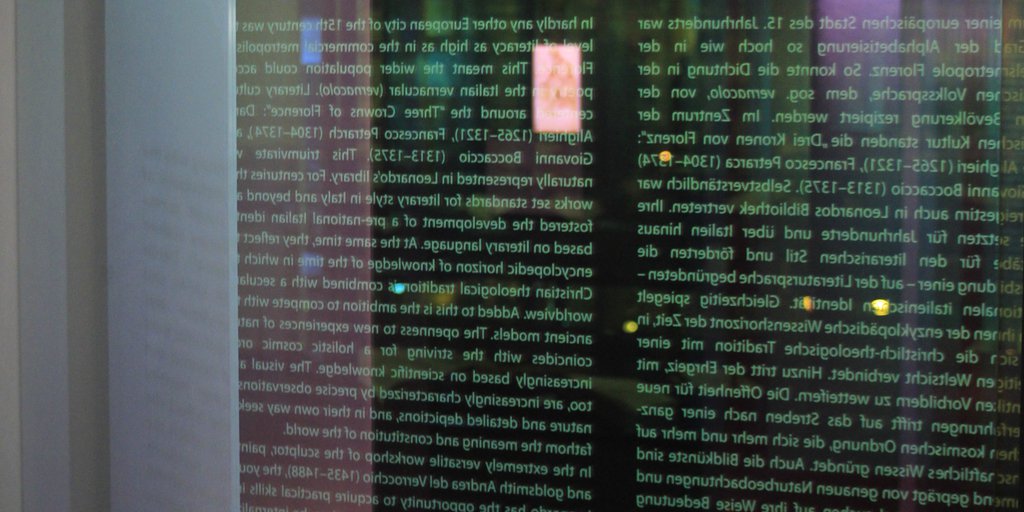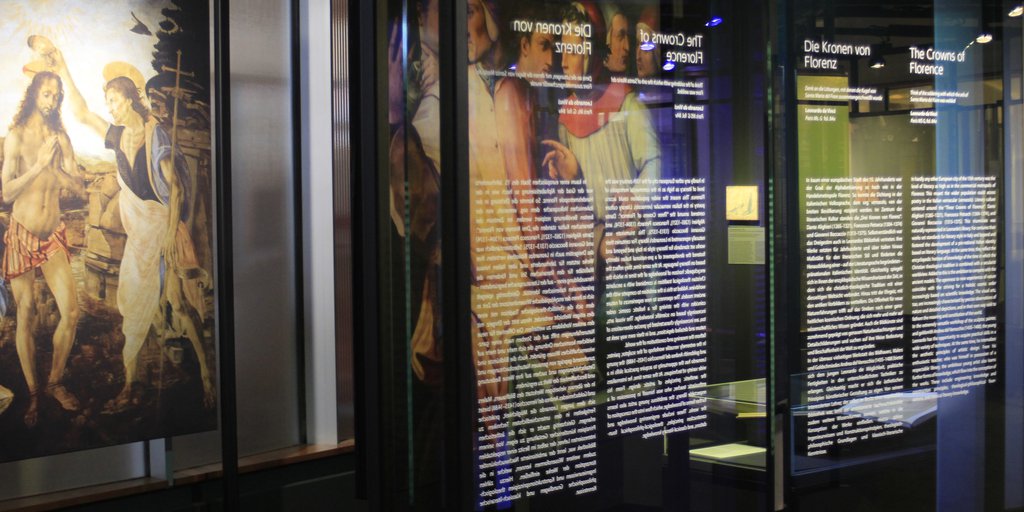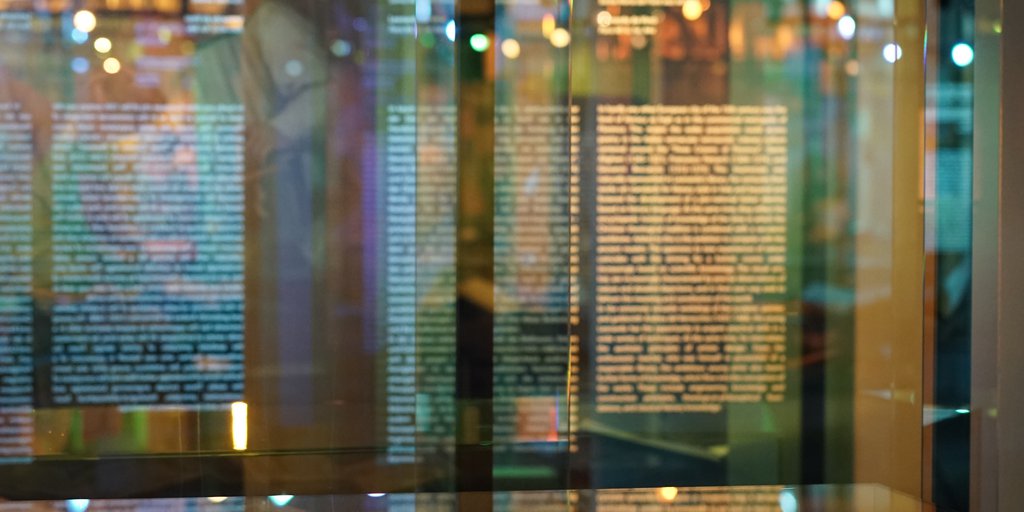
The Crowns of Florence <
Think of the soldering with which the orb of Santa Maria del Fiore was welded.
Leonardo da Vinci
Paris Ms. G, fol. 84v. Translation: Elizabeth Hughes
In hardly any other European city of the 15th century was the level of literacy as high as in the commercial metropolis of Florence. This meant the wider population could access literature in the Italian vernacular (vernacolo). Literary culture centered around the “Three Crowns of Florence”: Dante Alighieri (1265–1321), Francesco Petrarch (1304–1374), and Giovanni Boccaccio (1313–1375). This triumvirate was naturally represented in Leonardo’s library. For centuries their works set standards for literary style in Italy and beyond and fostered the development of a pre-national Italian identity based on literary language. At the same time, they reflect the encyclopedic horizon of knowledge of the time in which the Christian theological tradition is combined with a secularist worldview. Added to this is the ambition to compete with the ancient models. The openness to new experiences of nature coincides with the striving for a holistic cosmic order increasingly based on scientific knowledge. The visual arts, too, are increasingly characterized by precise observations of nature and detailed depictions, and in their own way seek to fathom the meaning and constitution of the world.
In the extremely versatile workshop of the sculptor, painter, and goldsmith Andrea del Verrocchio (1435–1488), the young Leonardo has the opportunity to acquire practical skills in a wide variety of techniques. At the same time, he internalizes the aesthetic principles of artistic design. From his enthusiastic teacher, who was himself in possession of a respectable library, the ambitious young artist also learns further forms of knowledge, which flow into the conception of the works. These include engineering knowledge and construction principles, theological-philosophical foundations, and classical literary knowledge.
Artists' Workshop <
 | 27.
Painter’s apprentice drawing ca. 1450–1460 |
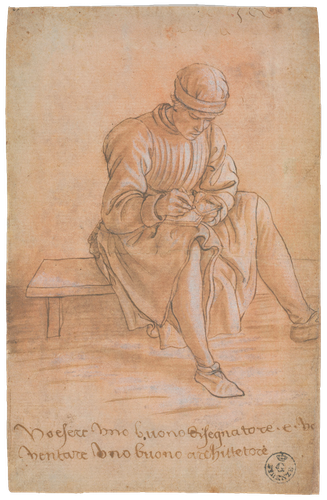
In the Florentine workshop of Maso Finiguerra (1426–1464), who like Andrea del Verrocchio was a trained goldsmith, drawing also played a fundamental role in training and design. The master, however, by no means confined himself to communicating technique. He thought the activity of drawing was a subject worth portraying in its own right, and showed this in many detailed pen and ink drawings. Several workshop books document the everyday practice of apprentices and assistants like this young man who, sitting on a stool, is busily filling a small sketchbook rather like the notebooks that Leonardo would carry with him throughout his life. The motto at the bottom of this sheet was probably added later and explains the aspiration and goal of this exercise in concentration: “I want to be a good draughtsman and I want to become a good architect.”
References
Bartoli, Roberta. 1992. In Il disegno fiorentino del tempo di Lorenzo il Magnifico. Exhibition catalogue Gabinetto Disegni e Stampe degli Uffizi, Florence, 8.4.–5.7.1992, edited by Annamaria Petrioli Tofani. Cinisello Balsamo: Silvana Editoriale, 61, no. 2.18-21.
Löhr, Wolf. 2007. Disegno. Der Zeichner im Bild der frühen Neuzeit. Exhibition catalogue Kupferstichkabinett der Staatlichen Museen zu Berlin, 23.11.2007–24.2.2008. Edited by Hein-Thomas Schulze Altcappenberg and Michael Thimann. Berlin / Munich: Deutscher Kunstverlag, 86–93, no. 14–18.
Melli, Lorenza. 1995. Maso Finiguerra. I disegni. Florence: Edifir, 81, no. 68.
